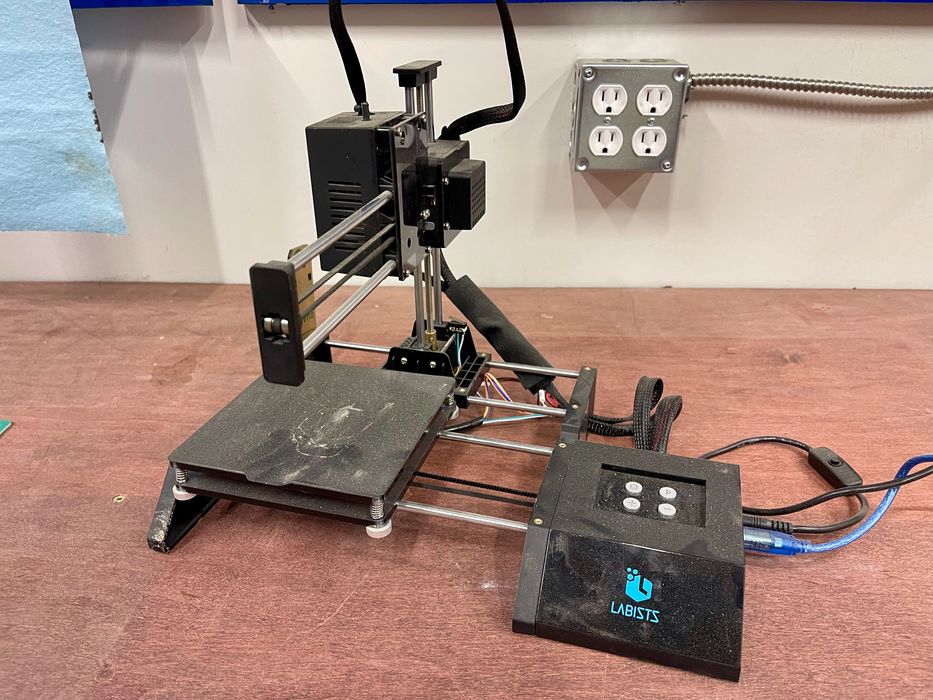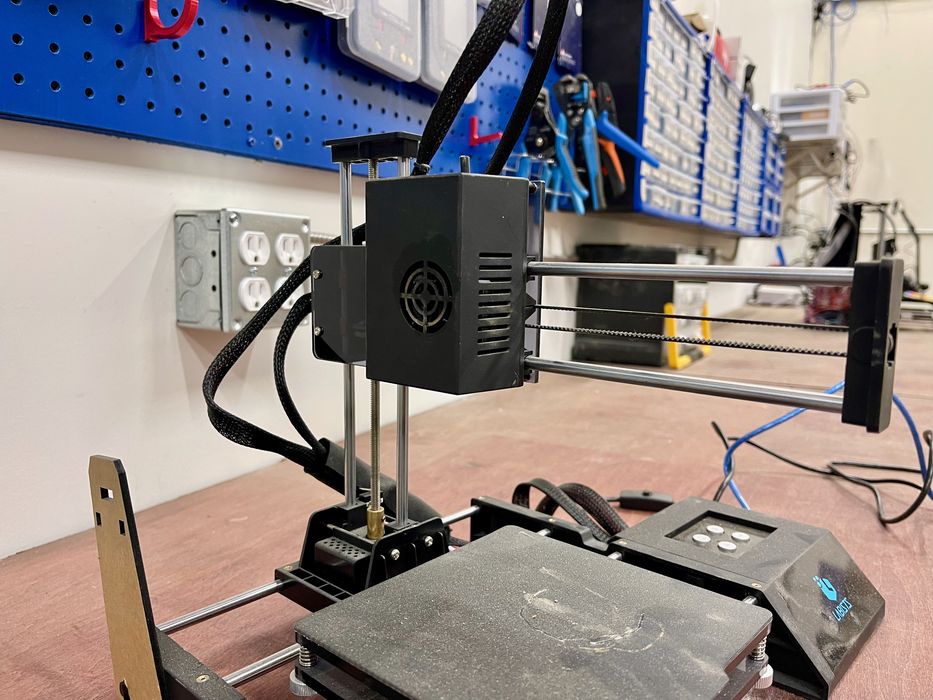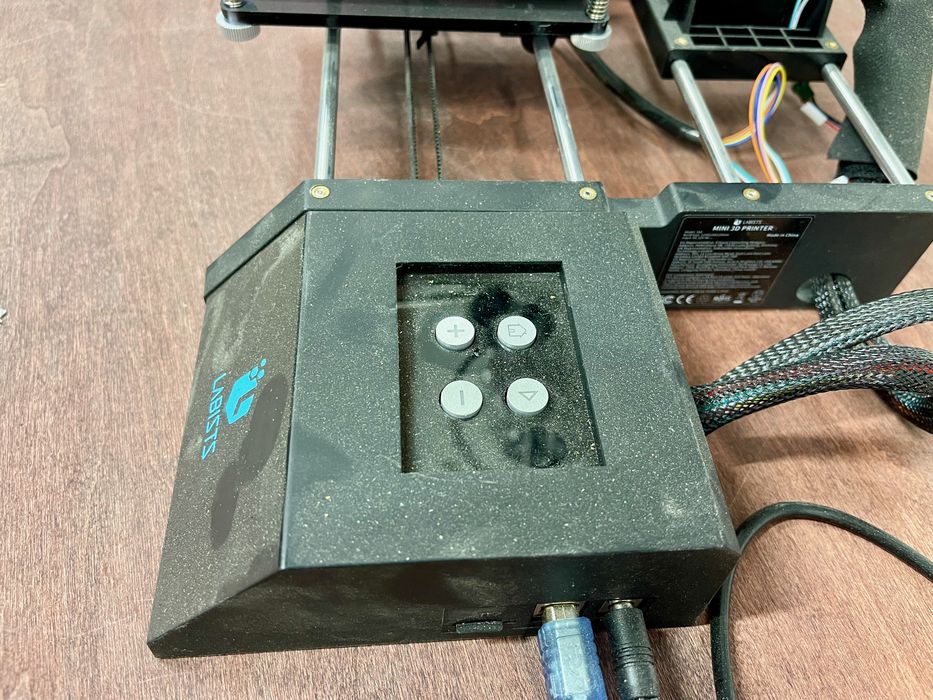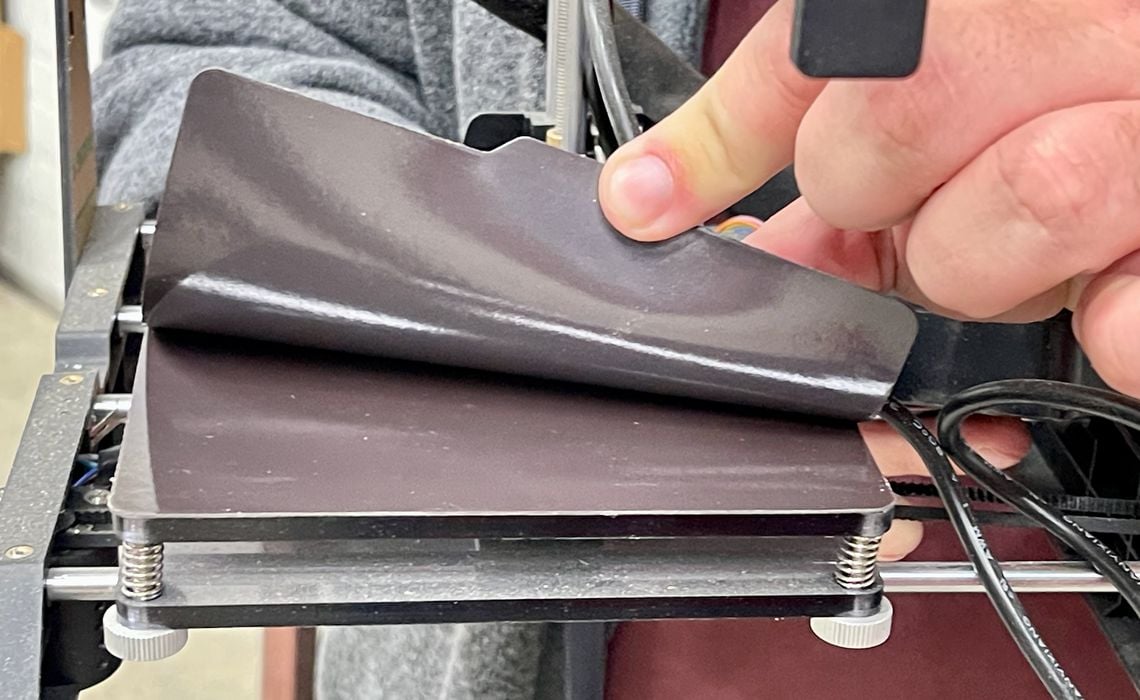
I encountered what I thought to be a rather ancient 3D printer last week.
During a routine tour of a workshop, I was presented with a series of desktop 3D printers. As one might expect, there was the usual mix of FFF and MSLA devices. An Ultimaker, a delta machine and a few others, even the notorious ANET A8. Nothing too surprising, aside from the growing interest in and use of 3D printing by small businesses.
Then I was shown a very strange 3D printer I had never seen previously.
The machine seems to be a LABISTS SX1 Mini Desktop 3D printer.
I say, “seems to be”, because we’re not really sure. The item was actually acquired from a thrift shop, where the (presumably) original owner had abandoned it for others to use.
This is a very typical scenario. The truth is that desktop 3D printers have been terribly unreliable for many years, and errors of various sorts are encountered regularly.
These problems usually aren’t much of an issue for most tech-savvy 3D printer operators. If something’s wrong, just fix it. This happens every day.
But what happens when the owner isn’t comfortable with tech? Perhaps they bought the 3D printer on a whim, but got too deep into a tech problem? Perhaps someone gifted them the machine and they had insufficient tech skills to run it properly? Maybe they bought it from a thrift shop and then returned it!
Back to the 3D printer.

I’m fascinated by old 3D printers, having used many of them years ago. Of course, these days almost any 3D printer is vastly better than older equipment, so it’s rare that I fire one up.
But this machine seemed quite different. It uses a cantilever design that is reminiscent of the Prusa MINI, but has a very small build volume.
The machine was acquired totally without any documentation, and the owner had to figure out how to run it from scratch. It turns out it has an internal controller, but for all practical purposes must be driven from an external PC running appropriate software to send commands to the device.
Operation of the machine is unique, and uses a method I’ve never encountered previously. There is no LCD panel or touchscreen, again to reduce cost. In other words, there is literally no way to get any operational feedback aside from observing the machine’s actions!

Inside the machine it turns out it uses a standard Marlin board equipped with an LCD connector. In theory, then, one could add a display to the SX1, if you also made a mounting system.
This is why the SX1 requires an external PC: there is no way to monitor the current temperature, positions or other critical information. That data can be found in external software.

For control, the SX1 has only four icon-labeled buttons. No knob. No touchscreen.
What are they? It’s impossible to say, but after a “push all the buttons and see what happens” session, the owner confirmed they were “HOME”, “PRINT”, “PLUS” and “MINUS”.
Of most interest was to determine exactly how old this machine was. When did it come to market? My initial guess was perhaps 2014 or earlier, since every machine after that point included a control panel of some sort.

My research resource here was the Internet WayBack Machine, which holds archives of older web pages that can be readily inspected. I searched through the LABISTS website and was absolutely shocked to discover that the device seems to have first appeared in …
2021!
The machine’s current owner found it in 2022, so evidently the original owner didn’t even last a year with it. Somehow I am not surprised.
Looking through the archived pages, it seems that the SX1 was first launched with a price of US$169 in 2021. That might have been a low price for a 3D printer a couple of years ago, but for a stripped down machine like this in 2021, it’s too high price. Even then one could purchase far more capable machines for US$200. Now there are even more.
Then I got a further surprise: you can still buy an SX1 today!
The LABISTS site is still active, and while they seem to be mostly focused on Raspberry Pi kits, they actually do still list the SX1 on their site.
At a price of US$199.
And it’s a kit you assemble.
That amount is fantastically overpriced for this machine.
If there was a current machine design on the market that would cost, say, US$99, the SX1 would fit that niche nicely. At US$199, it’s time to run away quickly.
That is, unless you can get one a thrift shop for US$40.
Via LABISTS

That looks pretty much the same as the Proton (https://www.thingiverse.com/thing:2149685) with some improvements, although the Proton was first published in Thingiverse in 2017.